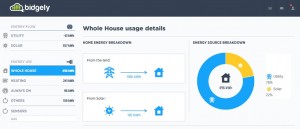A Clean Energy Miracle: My Challenge To Bill Gates
By Yann Brandt
 In June, Bill Gates published an article on his site, gatesnotes, titled “We Need Energy Miracles.” Mr. Gates notes that much like breakthroughs in vaccines have helped create miracles, society needs to drastically increase the amount of spending on R&D in clean energy. Ironically, there are only a few people in the world that could actually generate a true clean energy miracle and Bill Gates is one of them.
In June, Bill Gates published an article on his site, gatesnotes, titled “We Need Energy Miracles.” Mr. Gates notes that much like breakthroughs in vaccines have helped create miracles, society needs to drastically increase the amount of spending on R&D in clean energy. Ironically, there are only a few people in the world that could actually generate a true clean energy miracle and Bill Gates is one of them.
Consider the scenario: A scientist develops a solar panel that is 50% efficient, dropping the cost per watt to under $0.30. A 60 cell module would generate close to 800 watts of power. Let’s say that the stability is there, the development and commercialization could cost billions of dollars. This research and development would be meaningless even if a blank check was offered to create such a product and build the factory.
Unlike vaccines, the R&D is not where all of the capital has to go. Energy is generated over decades whereas vaccines have a small per unit cost after R&D is completed. Energy needs long term capital investments way beyond the upfront costs of technology developments, even if the technology innovation qualifies as a miracle. Most of all, energy requires capital stability of the manufacturer that is producing the product to support the long-term nature of the project’s energy production.
Bill Gates is already investing in the R&D miracle, and has done so on multiple occasions, mainly in energy storage including Aquion and LightSail. Both investments were later stage technology investments and neither includes energy production. Not too bad for the richest man in the world, but definitely room for improvement. As some venture capitalists have learned and discussed, there is much to invest in earlier and downstream energy innovation.
In the next era of Bill Gates’ energy investments, it should include a fund to finance new technology projects. The projects should generate a small but positive IRR so that it is not a charity but akin to government backed loans. Instead the fund should ignore technology risk. Since Mr. Gates would be the funding source or major investor in the R&D miracle, it makes all the sense in the world that his project finance fund fully trust the technology.
Making a project finance fund agnostic to technology risk sounds insane for anyone in the finance business, especially if the project returns aren’t out of this world. But for someone like Bill Gates it means an attempt at creating a clean energy miracle. Therein lies the challenge to Mr. Gates. Invest billions in R&D, but allocate billions to a technology risk agnostic project fund, the miracle clean energy really needs.




